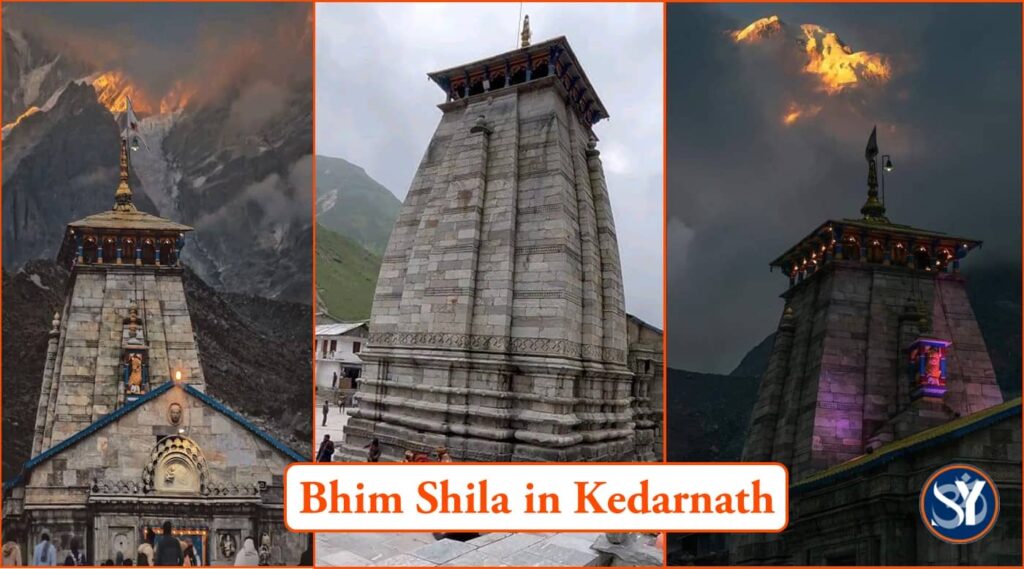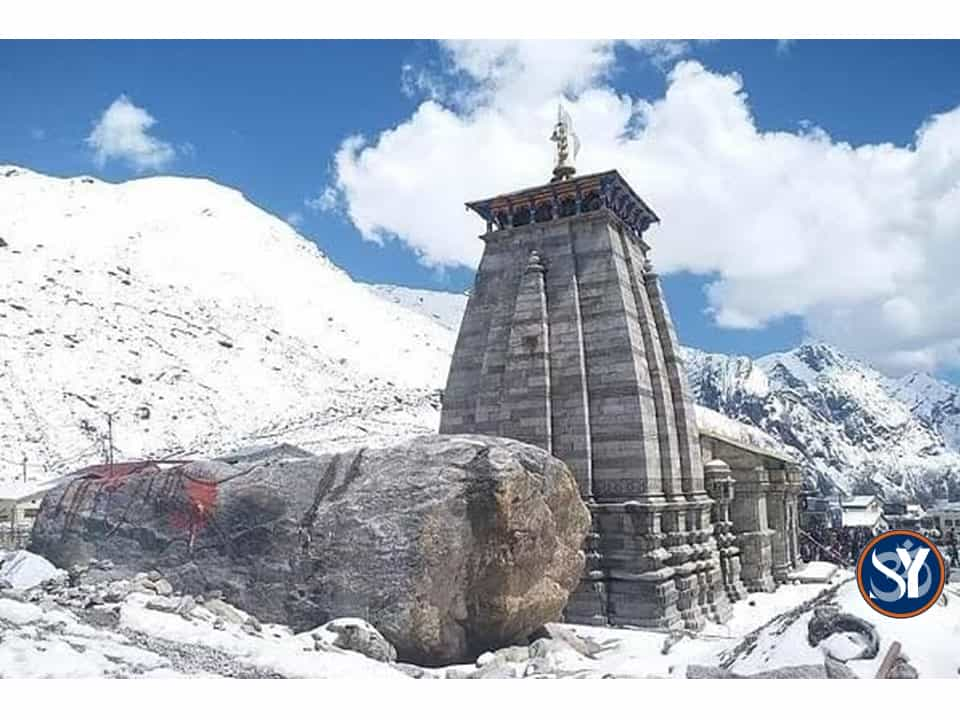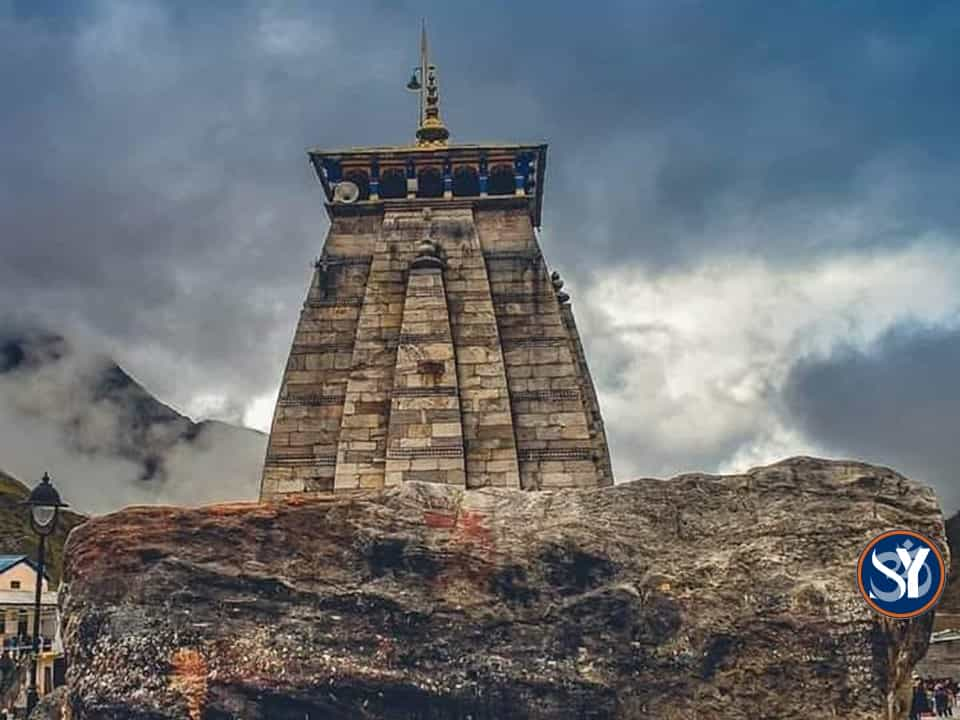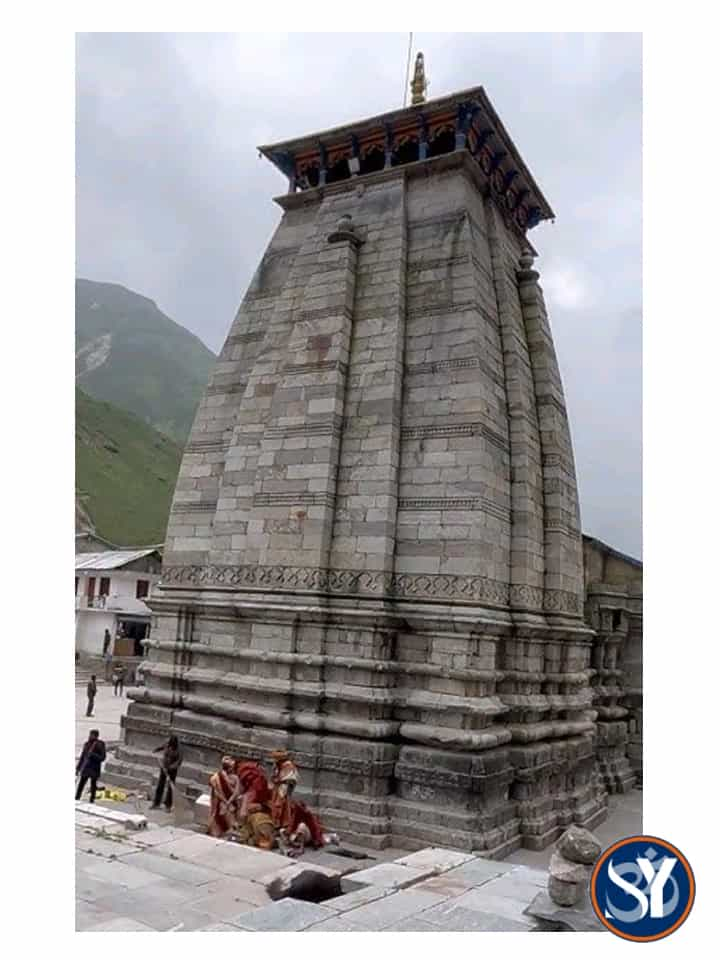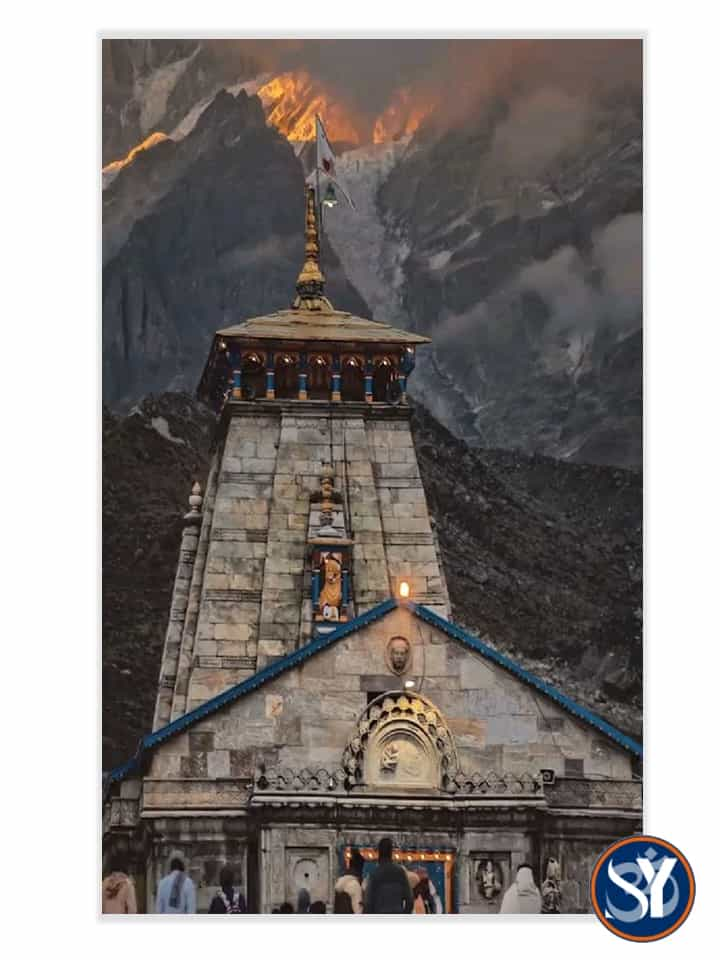Introduction Bhim Shila in Kedarnath
Bhim Shila in Kedarnath: Welcome to the mystical land of Kedarnath, nestled in the majestic Himalayas. This sacred pilgrimage site holds a treasure trove of ancient myths and legends, drawing devotees from all corners of the globe. Amidst this hallowed terrain lies an intriguing geological wonder known as Bhim Shila . A colossal rock formation that stands as a testament to both nature’s power and mankind’s faith.
Prepare to embark on a journey that intertwines mythology, spirituality, and natural beauty. In this blog post, we will delve into the significance of Bhim Shila within Chardham Yatra . One of India’s holiest pilgrimages — while unravelling its enigmatic past and exploring its vital role in religious practices.
So, fasten your seatbelts (or should we say trekking boots), for an adventure awaits at Kedarnath very own Bhim Shila!
The Mythological Importance of Bhim Shila
Bhim Shila, located in the holy town of Kedarnath, holds immense mythological significance. According to Hindu mythology, it is believed that during their journey to heaven, the Pandavas stopped at Kedarnath and were confronted by Lord Shiva in the form of a bull. It was here that Bhima, one of the Pandava brothers known for his strength and valour, stood on this massive rock known as Bhim Shila. This was to engage in a fierce battle with Lord Shiva.
Legend has it that Bhima used his mace (gada) to strike down the bull’s hump. However, Lord Shiva managed to escape into the ground and reappear elsewhere as a manifestation called Nandi. The imprints left by Bhima’s blow are still visible on Bhim Shila today.
This mythical event serves as a reminder of devotion and mortal limitations before divine power. The story signifies both the mightiness of Lord Shiva and highlights how even great warriors like Bhima were humbled in front of him.
Bhim Shila in Kedarnath
To this day, devotees visiting Kedarnath pay homage to Bhim Shila as they believe it carries special blessings from both Lord Shiva and Bhima himself. Many offer prayers or perform rituals near this sacred rock seeking strength and protection.
The spiritual significance attached to this ancient stone not only adds depth to religious practices but also enhances the overall experience for pilgrims undertaking Chardham Yatra. – Its a transformative journey through four sacred shrines including Kedarnath.
Discovering such profound tales embedded within natural formations like Bhim shila makes every visit all more awe-inspiring. As visitors stand before this colossal rock with its historical associations intact over centuries; they cannot help but feel connected with an extraordinary past that intertwines faith, legends, and nature itself.
Bhim Shila Photos
The Geological Formation of Bhim Shila
The geological formation of Bhim Shila is a fascinating aspect that adds to its allure and significance. This massive rock formation is believed to have originated millions of years ago during the violent upheavals in the Earth’s crust. Over time, intense tectonic forces caused the rocks to fracture and fold, giving rise to this imposing structure.
Composed primarily of sedimentary rocks such as limestone, sandstone, and shale, Bhim Shila showcases layers upon layers of ancient history. These rocks hold within them clues about the Earth’s past climate conditions, the presence of marine life, and even evidence of volcanic activity.
One can’t help but marvel at how nature has sculpted this incredible landmark through countless years of erosion by wind, water, and ice. The jagged edges and unique shapes formed by these processes make Bhim Shila a true natural wonder.
It is truly awe-inspiring to think about how this geological masterpiece has withstood the test of time while bearing witness to the changing landscapes around it. As visitors stand before Bhim Shila, they are reminded not only of its geological origins but also their own insignificance in comparison to the vastness and power of nature.
Bhim Shila in Kedarnath
Intriguingly enough, geologists continue their studies on Bhim Shila in order to gain further insights into our planet’s history. By analysing its composition and structure more closely, scientists hope to uncover secrets that may unlock new understandings about our world.
Bhim Shila stands as a testament not only to nature’s immense power but also its ability to inspire awe and reverence among those who visit it. Its grandeur serves as a reminder for us all that we are merely temporary guests on this Earth‑a humbling thought indeed. So next time you visit Kedarnath during your Chardham Yatra pilgrimage journey or simply seek solace amidst nature’s wonders take a moment at Bhim Shilha-let it remind you of the beauty and significance that lies within our planet’s geological formations
How to Reach Bhim Shila and Kedarnath
Kedarnath, nestled in the picturesque Garhwal Himalayas of Uttarakhand, is not just a spiritual abode but also a place of natural beauty. The Bhim Shila, located near the Kedarnath temple, adds to its mystical charm. If you are planning a visit to this divine destination and want to explore the significance of Bhim Shila, here’s how you can reach it.
The journey begins with reaching Rishikesh or Haridwar by train or air. From there, you can hire a taxi or take a bus to Gaurikund — the starting point for your trek towards Kedarnath. The 14 km trek offers breath-taking views of snow-capped peaks and lush green valleys that will leave you spellbound.
For those who prefer an easier way to reach Kedarnath, helicopter services are available from Phata or Guptkashi. This option allows you to skip the strenuous trekking part and directly reach Kedarnath in just 10–15 minutes.
Once you reach Kedarnath, take some time to soak in the spiritual aura of this ancient temple town before proceeding towards Bhim Shila. It is believed that Lord Vishnu appeared as Lord Krishna on this sacred rock formation during his stay at Kedar.
To visit Bhim Shila from Kedarnath Temple Complex, follow the path along Vasuki Tal (lake) till you come across this massive stone slab. As per mythology, it was placed by Bhima (one of the Pandavas brothers) as he attempted to build a bridge over Saraswati river using his mace-like weapon (gada).
Standing at around 23 feet tall and weighing several tons, Bhim Shila leaves visitors awestruck with its sheer size and power. Its significance lies not only in mythological tales but also in its geological formation which dates back millions of years.
Importance of Bhim Shila in Religious Practices
Bhim Shila holds immense importance in religious practices, particularly for devotees visiting the sacred site of Kedarnath. This large rock formation is believed to have been placed there by Bhim, one of the Pandavas brothers from the epic Mahabharata. According to mythology, Bhim used this stone as a platform to stand on when he installed the lingam (divine symbol) of Lord Shiva at Kedarnath.
In Hinduism, rocks and stones are often considered sacred and are worshipped as manifestations of divine energy. Similarly, Bhim Shila is revered as a powerful symbol of devotion and strength. Pilgrims make it a point to pay their respects to this holy rock during their visit to Kedarnath.
The spiritual significance attached to Bhim Shila transcends its mythological origins. It represents unwavering faith and devotion towards Lord Shiva among devotees. Many believe that offering prayers at this spot can help remove obstacles in their lives and grant them blessings for prosperity.
Visiting Bhim Shila during the Chardham Yatra has become an integral part of religious rituals for many pilgrims. The journey itself is seen as an act of purification and self-discovery, with each step bringing devotees closer to salvation.
Bhim Shila in Kedarnath
This ancient rock formation not only serves as a reminder of our rich cultural heritage but also showcases nature’s marvels. Its sheer size and unique geological features captivate visitors from all walks of life.
As we continue preserving these significant landmarks like Bhim Shila, we ensure that future generations can experience the profound spirituality associated with such places. Efforts must be made to protect this natural wonder so that it remains intact for years to come.
Bhim Shila stands tall today as more than just a rock. It embodies centuries-old beliefs and traditions passed down through generations. We cannot overstate Its role in religious practices.- It connects pilgrims to their faith, offers solace, and inspires a sense of awe.
Interesting Facts About Bhim Shila
Bhim Shila, situated in the holy town of Kedarnath, holds a plethora of fascinating facts that add to its allure. Here are some interesting titbits about this mystical rock formation:
- Mythical Connections: Devotees associat it with the Pandavas prince, Bhima, from the epic Mahabharata. Legend has it that he placed this massive stone here to protect the entrance of Kedarnath temple.
- Unique Geological Formation: This gigantic boulder is composed of rough granite, weighing around 1200 kg! Its distinct shape and size make it stand out amidst the natural surroundings.
- Symbolic Significance: Devotees consider Bhim Shila as a symbol of strength and protection. It is revered for its association with Lord Shiva and holds deep religious significance during Chardham Yatra.
- Natural Beauty: The picturesque location surrounding Bhim Shila offers breath-taking views of snow-capped mountains. The lush green valleys is truly a treat for nature lovers!
Interesting Facts About Bhim Shila
5. Pilgrim Attraction: Each year, thousands of pilgrims visit Kedarnath to seek blessings at the revered shrine. Devotees catch a glimpse of this remarkable rock formation along their spiritual journey.
6. Conservation Efforts: To preserve this sacred site, authorities have implemented strict regulations prohibiting any alterations or damage done by tourists or locals alike.
8. Future Plans: With ongoing initiatives focusing on sustainable tourism development in Uttarakhand, plans are underway to enhance visitor facilities while ensuring minimal impact on the environment.
These intriguing facts about Bhim Shila shed light on its historical importance. As it continues to captivate devotees and explorers alike who venture into this enchanting realm nestled within nature’s embrace.
Preservation Efforts and Future Plans for Bhim Shila
The preservation of Bhim Shila, like any other historical and religious site, is crucial to maintain its integrity and ensure that future generations can continue to experience its significance. The authorities responsible for the upkeep of Kedarnath have taken several measures to protect this sacred stone.
One of the most important steps in preserving Bhim Shila is regular maintenance. A team of experts regularly assesses the condition of the rock formation, identifying any signs of erosion or damage. This allows them to take immediate action to prevent further deterioration.
To minimize human impact on Bhim Shila, access restrictions have been implemented. Pilgrims are guided along designated paths and prohibited from climbing or touching the sacred stone directly. This helps in reducing physical wear and tear caused by excessive human contact.
In addition to these efforts, awareness campaigns have also been launched to educate visitors about the importance of preserving Bhim Shila. Information boards near the site provide details about its geological significance as well as instructions on how visitors can contribute towards its conservation.
Looking ahead, there are plans underway to develop a comprehensive preservation strategy for not just Bhim Shila but also other significant landmarks within Kedarnath. This includes implementing advanced monitoring techniques and exploring sustainable methods for managing visitor footfall.
By focusing on long-term preservation goals while balancing visitor accessibility, authorities aim to safeguard the natural beauty and religious importance of Bhim Shila for generations to come.
Conclusion
The Bhim Shila in Kedarnath holds immense religious and mythological significance. Its association with the great Pandavas warrior, Bhima, adds to its allure and attracts devotees from far and wide. The geological formation of this gigantic rock is a marvel in itself, showcasing the power of nature.
Reaching Bhim Shila requires undertaking the Chardham Yatra, a pilgrimage that holds deep spiritual meaning for millions of believers. Along with visiting the sacred shrines at Yamunotri, Gangotri, Badrinath, and Kedarnath, paying homage to Bhim Shila completes this transformative journey.
This massive rock’s importance in religious practices cannot be overstated. Devotees believe it to be an offering by Lord Vishnu himself to bless his devoted follower Arjuna during their time spent in Himalayas as per mythology. Devotees perform rituals and prayers here seeking blessings for strength and protection.

